With the experience gained after living in Japan for 2 and a half years and having visited much of the country, I have decided to create this travel guide that includes the best of Japan in 2 weeks. The Land of the Rising Sun has always aroused interest and curiosity around the world. Its ancient culture, delicious cuisine, advanced technology, blend of old and new, and the courtesy of its people.
Whether you are thinking of going to Japan to celebrate your honeymoon, traveling in a group, or tempted by the idea of backpacking on your own in this unique country, in this 2-week travel guide to Japan, you will find everything you need to visit and enjoy the must-sees like Osaka, Kyoto, and Tokyo, as well as some lesser-known gems like Nagasaki, Fukuoka, Kurashiki, or Himeji.
Japan is made up of 5 main islands. From south to north: Okinawa, Kyushu, Shikoku, Honshu, and Hokkaido. In this 2-week itinerary for Japan, I suggest starting with Kyushu and reaching Honshu. If you decide to extend the itinerary to 3 weeks, you can add Okinawa or Hokkaido. This will depend on the time of year you travel to Japan and on how much time you want to spend in tropical islands, cities, or experiencing some of the best snow in the world.
10 things to know before your trip to Japan
- In Japan, they drive on the left side of the road.
- In Japan, cash is king. I recommend always carrying cash with you.
- In Japan, there are no trash cans on the streets. People hold onto their trash until they get home.
- In Japan, it is frowned upon to leave a tip.
- In Japan, public restrooms are free, plentiful, and so clean that they seem brand new.
- Japanese culture revolves around not bothering others. Avoid talking on the phone in public transportation.
- The most famous mega store in Japan is called Don Quijote. You’ll find it in the biggest cities. They have everything. Good, nice, and cheap.
- There are millions of onsen (hot springs) throughout Japan. You enter them naked, and they are separated by gender. It’s an experience you must include in the best of Japan in 2 weeks.
- In Japan, there are three stores open 24 hours: Family Mart, Seven Eleven, and Lawson. They’re known as konbini, and you can buy food and drinks at a good price.
- English is not spoken much in Japan, and they will greatly appreciate it if you say some basic words in Japanese. Download Google Translator and the Japanese language to use it offline.
How to get around Japan?
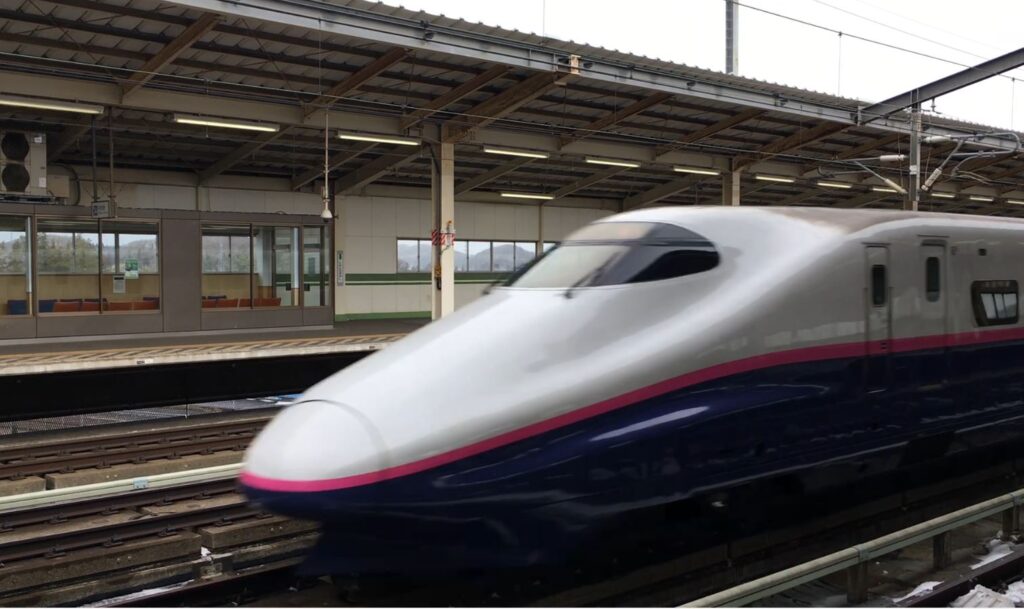
Public transportation in Japan is one of the best in the world. Absolute punctuality and comfort blend with speed and tranquility. You can board a subway full of thousands of people and not hear a single noise. In most public transport, you’ll see signs indicating not to speak loudly and to use headphones if you want to listen to music. Japanese people do everything possible not to disturb others. And this includes immaculate cleanliness on trains, buses, and throughout the rest of the country, especially in public bathrooms 🙂
All of this, obviously, comes at a price. Getting around by subway in cities like Osaka, Kyoto, or Tokyo is not expensive at all. A single ticket usually costs around €1.5. Every 2 or 3 minutes, a new subway arrives to help transport the millions of inhabitants of the country. It’s incredible. That said, getting around Japan in rural areas or between lesser-known cities is not cheap. Buses and trains still exhibit the characteristics mentioned above, but their prices are similar to or higher than in Europe.
The itinerary included in the best of Japan in 2 weeks will take you through its main cities and some lesser-known ones, but well worth visiting. The fastest and most comfortable option for moving between these cities is the Shinkansen, better known to us as the bullet train. The price of a single Shinkansen ticket is usually quite high, and for Japanese people, there is no pass or subscription that helps reduce the price. However, for tourists, there is the JR Pass, something similar to the Interrail pass we have in Europe. This pass, in addition to reducing the cost of individual tickets, allows you to move quickly and efficiently between the main cities of the country.
Depending on whether you follow the itinerary to the letter or decide to modify it slightly by spending more days in certain cities, it may be worth it to buy this pass or to use regular public transportation. Even if you decide not to use the pass because you will only be traveling a couple of times between cities, I recommend that you take the bullet train at least once. It’s an incredible experience.
Why isn’t English spoken very well in Japan?
Before going to Japan, I had been warned that the average Japanese person doesn’t speak much English. In my mind, I imagined it would be like in some Southeast Asian countries, but I was wrong. After 2 and a half years in the Land of the Rising Sun, I have come to the conclusion that there are two main reasons why Japanese people don’t speak much English.
1) Fear of making mistakes:
Japan is an incredible country with many things to enjoy. However, Japanese society is quite peculiar, and understanding it takes time. In Japan, people give a lot of importance to what others think of them. Individuals feel judged by society. This, combined with the fact that Japanese people find it quite difficult to express their feelings, is the perfect cocktail for them to often choose not to speak English, even though they may be able to do so.
2) Katakana:
Another point that works against them when it comes to speaking English is Katakana. In Japanese, there are 3 alphabets: Hiragana, Katakana, and Kanji. Katakana is used for foreign words. For example, in Japanese, when trying to say the word milk in English, it’s not said as milk but as miruku. The same happens when trying to say coffee. Instead of coffee, it’s said as koohii. Katakana is very useful for Japanese people when they are in Japan. It’s a kind of a Japanized English. That said, once they venture into the outside world, Katakana becomes useless. The fact that they spend years speaking a Japanized English is the second reason why the average Japanese person doesn’t speak much English or doesn’t have a good level in the language of Shakespeare.
Basic Japanese for the best of Japan in 2 weeks
Once the reasons why English is not widely spoken in Japan have been explained, I would like to share with you some of the basic words that can help you during your 2 or 3-week trip to Japan.
- Hello: Konnichiwa
- Thanks: Arigato
- Please: Onegaishimas
- Bye bye: Sayonara
- See you later: Mata ne
- How are you?: Genki?
- I’m good: Genki des
- Subway: Chikatetsu
- How much is it?: Ikura deska?
- Thanks for the meal (it is normally said after finishing eating, before leaving the restaurant): Gochisosamadesta
How much does it cost to travel in Japan? Budget for the best of Japan in 2 weeks
How much does it cost to travel in Japan for 2 weeks? Depending on whether you’re going on your honeymoon, traveling in a group, or backpacking solo, your budget will obviously differ. That said, considering the cities included in the itinerary of the best of Japan in 2 weeks, I can provide you with an estimated budget. I won’t give you the price of the most expensive or the cheapest accommodation, but rather that of a mid-range one. Contrary to what most tourists believe, Japan is not an expensive country. Eating out is cheaper than in most countries in Europe.

For example, in one of my favourite chains, Fujisoba, you can have a Japanese curry with soba noodles for about 5 euros at the current exchange rate. At Ippudo, my favourite ramen chain in the country, you can enjoy a bowl of ramen with all the white rice you want (you can refill) for about 7 euros. Additionally, as of today, in 2024, the yen is not performing at its best, so you’ll benefit from that too.
Eating out is quite cheap, as well as getting around in big cities like Osaka, Kyoto, or Tokyo. Accommodation is the most expensive aspect of Japan. But the prices are not exorbitant. A night in a 3-star hotel usually costs less than in most of the countries in Europe. Due to the type of country Japan is, restaurants and hotel rooms are usually small, smaller than in Europe. However, the quality and comfort, from my point of view, are superior to those in Europe.
- Roundtrip flight from Europe: around 700 euros.
- Flight from Osaka to Nagasaki: around 40 euros.
- 2-week JR Pass: 500 euros.
- Accommodation: around 35 euros per night. 35 x 14 = 490 euros.
- Meals (breakfast, lunch and dinner): around 30 euros per day. 30 x 14 = 420 euros.
- Public transport to move around cities: around 10 euros per day. 10 x 14 = 140 euros.
With the expenses mentioned earlier, your budget for the best of Japan in 2 weeks would be 2290 euros. As I mentioned before, this depends on your travel plan and what you want to spend on extras: gifts, nightlife, or museums. You’ll probably want to buy gifts, anime figures, or clothes. So, a mid-range budget for traveling around Japan for 2 weeks would be around 2500 euros.

Day 1: Landing in Osaka and flight to Nagasaki
Arrival at Kansai Airport (Osaka). After collecting your luggage, you’ll take a flight to Nagasaki, on the island of Kyushu. The flight takes about 1 hour and 20 minutes. Depending on the time you arrive in Nagasaki, you can explore the surrounding area of where you’re staying or go straight to dinner and rest.
Days 2 and 3: Nagasaki
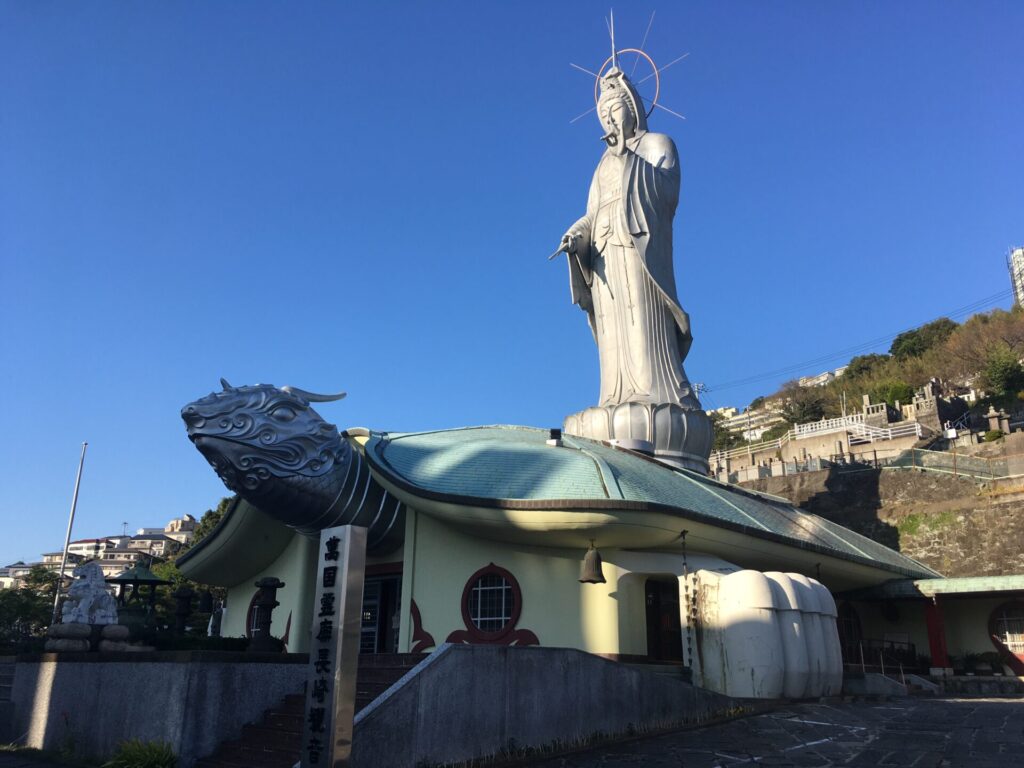
Nagasaki is one of the cities that has impressed me the most in Japan. It has immense cultural richness, as its port was the only one that remained open during the Edo period. This translates into a mixture of architecture and culture ranging from the Dutch and Portuguese to the Chinese and Koreans. Due to this, exploring Nagasaki, one can encounter Confucian temples, Catholic churches, or Shinto shrines.
In Japan, there is the concept of the “10 million dollar night views”. It’s a category that gathers some of the best night views in the Land of the Rising Sun. In the best of Japan in 2 weeks, the best of them couldn’t be missed, the one that can be observed from Mount Inasa. Additionally, in Japan, there are three cities that have a Chinatown. One is located in Yokohama, another in Kobe, and another… in Nagasaki 🙂 If all of this doesn’t seem enough reason to visit Nagasaki, unfortunately, there’s something else that makes it worth visiting: its tragic history during World War II. Yes, Nagasaki and Hiroshima were the two cities where the United States dropped the atomic bomb.
What to do and see in Nagasaki in 2 days? 10 essentials of Nagasaki
- Nagasaki Peace Park: a park built to promote peace and commemorate the tragedy of the atomic bomb.
- Nagasaki Atomic Bomb Museum: a museum that pays tribute to the victims and recounts the suffering that occurred during and after the atomic bomb.
- Fukusaiji Temple: one of the most unique temples in Japan. You can admire the statue of Kannon on top of a giant turtle.
- Meganebashi Bridge: a stone bridge where you can walk and enjoy the tranquility beside the river.
- Chinatown: Nagasaki’s Chinatown.
- Confucius Shrine: beautiful temple dedicated to Confucius.
- Urakami Cathedral: cathedral that was almost completely destroyed by the atomic bomb.
- 26 Martyrs Monument: monument dedicated to the 26 Christians who were executed in Nagasaki.
- Dutch Slope: street with Western-style architecture buildings from which you can observe part of the city.
- Mount Inasa: one of the most magical places in Nagasaki. It is advisable to go at sunset to enjoy the 10 million dollar view.
Day 4: Fukuoka

After spending 2 days enjoying Nagasaki, it’s time to head northeast to visit one of the meccas of ramen in Japan: Fukuoka. It takes about 1 hour and 30 minutes by bullet train. Nagasaki is one of the richest cities in terms of cultural and architectural points of view in Japan. So, it’s normal that Fukuoka doesn’t seem as beautiful. That said, the largest city in Kyushu has its own attractions.
What to do and see in Fukuoka in 1 day? 10 essentials of Fukuoka
- Canal City Shopping Mall: coming to Japan to visit a shopping mall? Don’t worry. I wouldn’t mention it if I didn’t have a good reason to do so. In addition to the various shops and curiosities that set it apart from a European shopping center, on the fifth floor, you’ll find the Fukuoka Ramen Stadium, where you can try ramen from different parts of Japan.
- Fukuoka Castle Ruins: ruins of an ancient feudal castle.
- Oohori Park: park near the castle ruins with a beautiful lake. Ideal for walking and relaxing.
- Kushida-jinja: Shinto shrine that serves as the starting point for summer festivals.
- Shofukuji Temple: first Buddhist Zen temple in Japan.
- Seaside Momochi: Coastal area along Hataka Bay. Futuristic buildings, parks, shops, and restaurants.
- Fukuoka Tower: with a height of 234 meters, this tower allows you to see Fukuoka from above. It is located in the Seaside Momochi area. I recommend going just before sunset to also enjoy the night views of the city.
- Uminonakamichi Seaside Park: huge park where you can enjoy different types of flowers. It also has around 2000 cherry blossom trees and bicycles for exploring it more comfortably.
- Yatai: street food stalls in various areas of the city. A good way to end the day is by dining and drinking with the locals. There are several yatais (food stalls) throughout the city, but the most famous areas are: Tenjin, Nagahama, and Nakasu.
- Hakata Gion Yamakasa Festival: one of the most interesting festivals in Japan where you can observe parades and processions. It takes place in the first week of July.
Day 5: Hiroshima

We leave the island of Kyushu behind and arrive at Honshu, the largest and most well-known island in Japan. It takes about 1 hour by bullet train from Fukuoka to Hiroshima. Unfortunately, like Nagasaki, Hiroshima is also known for the atomic bomb catastrophe.
What to do and see in Hiroshima in 1 day? 5 essentials of Hiroshima
- Peace Memorial Park: park built to remind the world of what happens when an atomic bomb is dropped. It is worth visiting the Peace Memorial Museum and the Atomic Bomb Dome.
- Hondori Street: pedestrian passage with various shops and restaurants.
- Shukkeien Garden: typical Japanese landscape garden with ponds, forests, and hills. As I mentioned with the onsen, you can’t leave Japan without visiting a Japanese landscape garden.
- Mitaki-Dera Temple: ideal for observing cherry blossoms or Japanese maple trees. The temple also features ponds, Buddhist statues, and pagodas.
- Hiroshima Castle: 5-story feudal castle with views over the city of Hiroshima.
Day 6: Miyajima
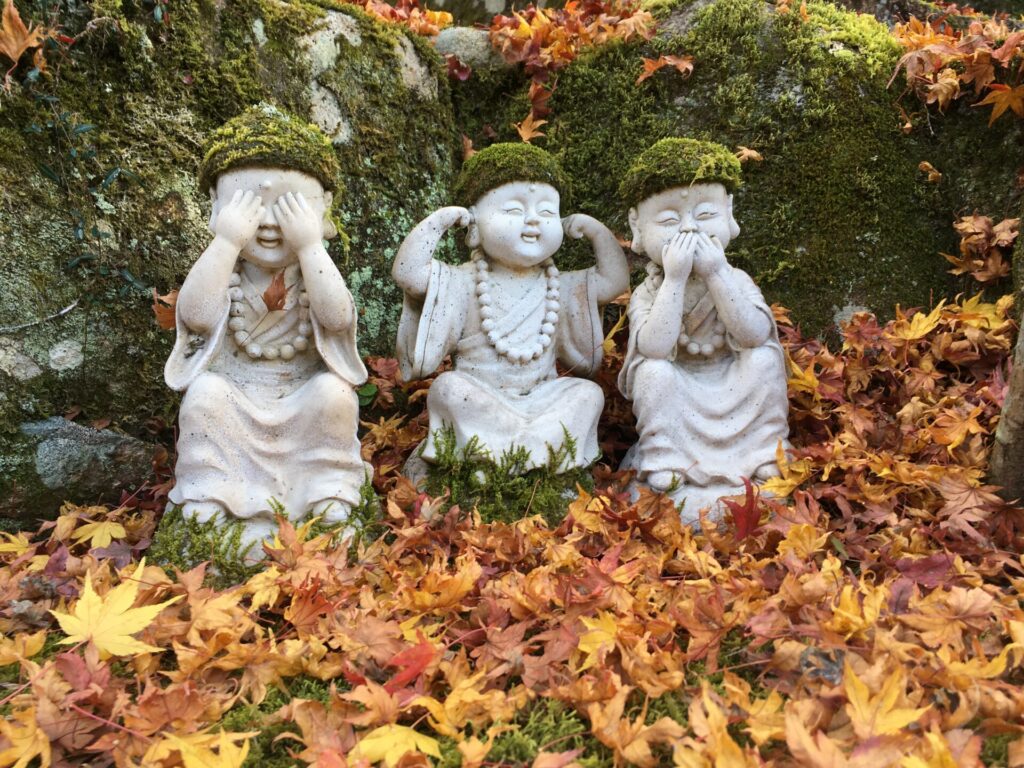
Miyajima is a small island about 1 hour away from Hiroshima. It is especially known for its floating torii gate (entrance gate to a Shinto shrine), one of the most iconic images of Japan. The island features various temples and streets with gift shops and restaurants. Additionally, you can observe deers strolling peacefully. If you visit the island in autumn, you will encounter forests of red and orange momiji trees (Japanese maple).
What to do and see in Miyajima in 1 day? 5 essentials of Miyajima
- Itsukushima Shrine: the Itsukushima Shrine is the most famous attraction on the island, as the famous floating torii gate is located in front of it.
- Daisho-in Temple: a beautiful Buddhist temple with different halls, statues, and stunning views of the island.
- Mount Misen: the highest mountain on the island. You can reach the summit by cable car or on foot (about 1 hour and a half). The ascent on foot is well worth it for the various views of the landscape.
- Senjokaku Hall: the Pavilion of a Thousand Tatami Mats. A huge hall with wooden flooring ideal for relaxing and enjoying the scenery.
- Omotesando Shopping Arcade: shopping arcade with gift shops, restaurants, food stalls, and cafes. Don’t forget to try the momiji manjū, a cake filled with chocolate, custard, or red bean paste.
Day 7: Kurashiki and Okayama
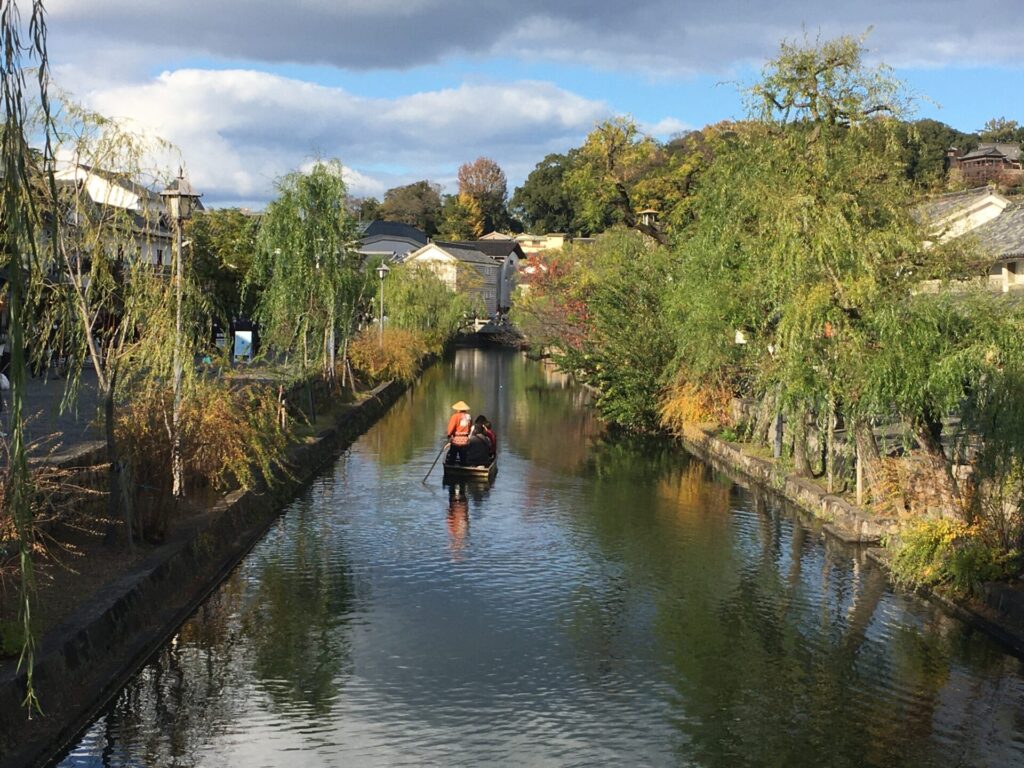
From Hiroshima to Kurashiki, it takes 1 hour by bullet train. Kurashiki is known as the “little Kyoto” or “little Venice” due to its canals, which used to connect the port with the city center. The canal area is a 10-minute walk from the train station. It’s worth leisurely walking through this part of the city, enjoying the canals, stone bridges, and the feeling of having traveled back in time. Half a day is usually enough, so I suggest continuing to Okayama (around 10 minutes by bullet train) and enjoying some of its gems. If you feel like taking it slower, you can spend the whole day enjoying Kurashiki and skip Okayama.
What to do and see in Kurashiki in 1 day? 5 essentials of Kurashiki
- Canal Area: the main attraction of Kurashiki.
- Ohara Museum: the first Western art museum in Japan. It houses works by Picasso, El Greco, and other important artists.
- Ohashi House: an old merchant’s house open to the public. You can appreciate tatami floors, sliding shoji doors (similar to paper doors), scrolls, and different rooms.
- Ivy Square: a complex of brick buildings with ivy-covered walls. It includes museums, restaurants, and a hotel.
- Honmachi Street: a beautiful street where you can breathe in Japan’s past.
What to do and see in Okayama in 1 day? 5 essentials of Okayama
- Korakuen Garden: ranked as one of the top three landscape gardens in Japan. It is definitely worth a visit. The garden closes at 17:00 or 18:00, depending on the season.
- Okayama Castle: beautiful Japanese feudal castle.
- Handayama Botanical Garden: ideal for enjoying cherry blossoms and/or city views, depending on the season you visit.
- Kibitsu Shrine: Shinto shrine full of culture, history, and mythology.
- Momotaro: Momotaro is a famous hero from Japanese folklore who was born from a giant peach. You can observe his statue outside Okayama train station or look for his image on the various manhole covers throughout the city.
Day 8: Himeji and Osaka
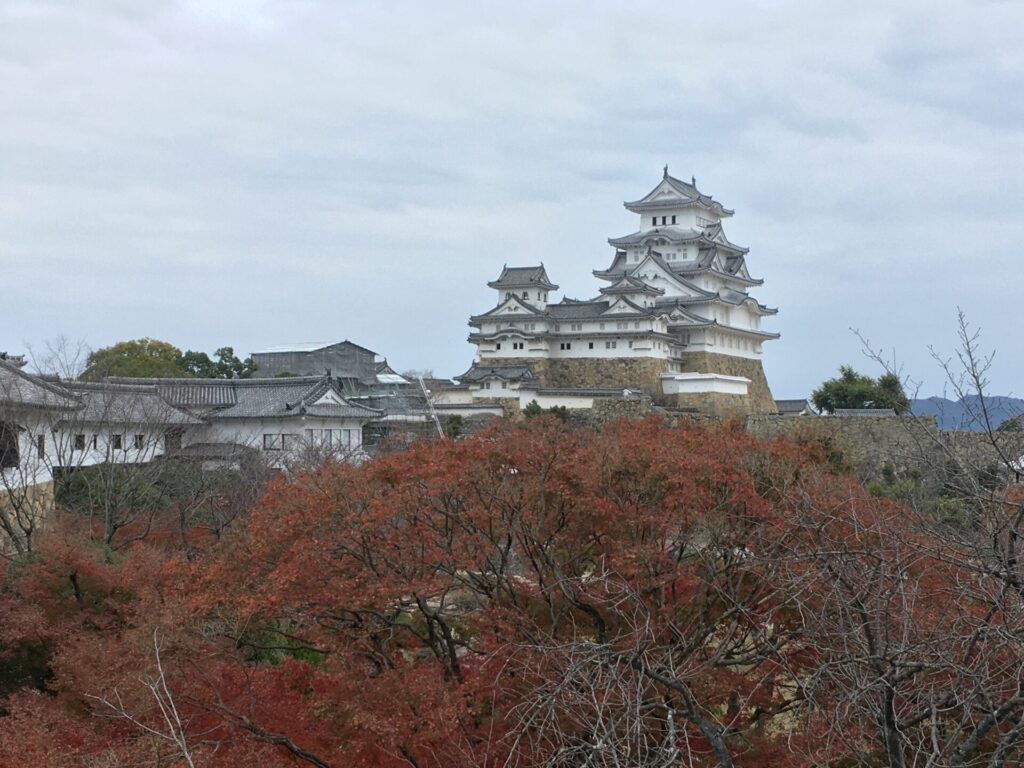
Himeji is known for having the largest, most imposing, and famous castle in all of Japan. Since it’s on the way to Osaka, I highly recommend visiting it. It takes about 50 minutes by bullet train from Kurashiki to Himeji. From Okayama to Himeji, it’s around 30 minutes. I recommend spending the morning enjoying Himeji Castle and then taking the bullet train back to reach one of Japan’s most famous cities: Osaka. It takes about 30 minutes by bullet train from Himeji.
Day 9: Osaka
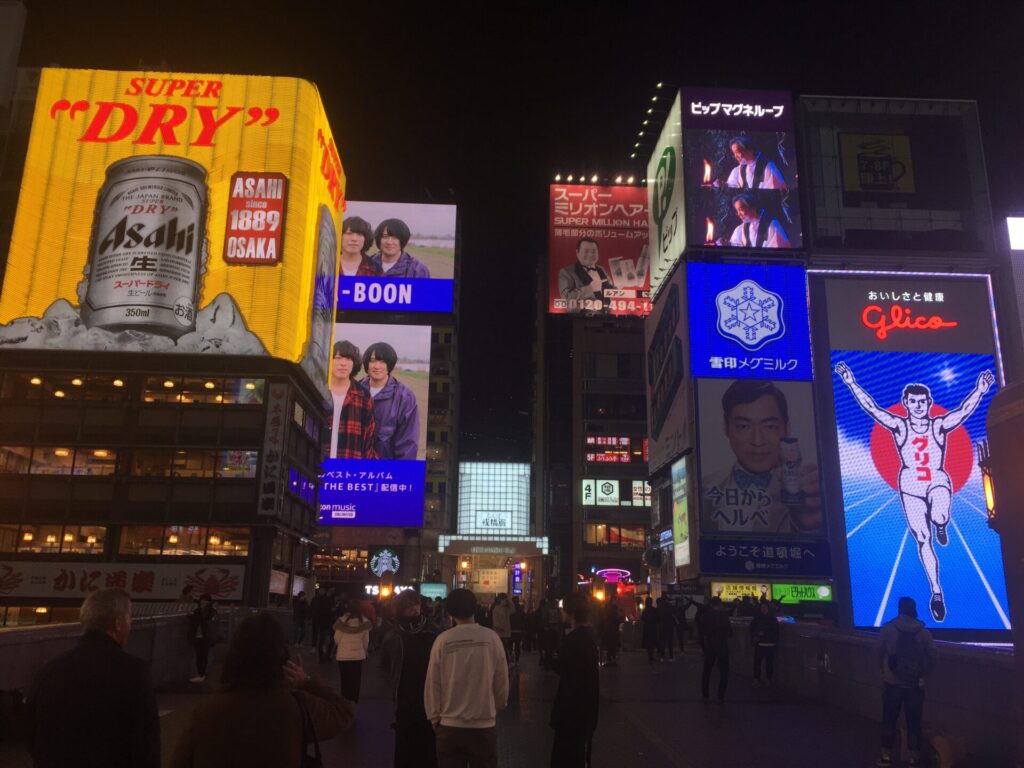
Osaka is the third largest city in Japan, after Tokyo and Yokohama. With this distinction, the city of Dotonbori, Namba, or The New World couldn’t be missing from the best of Japan in 2 weeks. Osaka is known for many things, but above all for its gastronomy, recognized worldwide. Among the most typical dishes are: takoyaki, okonomiyaki, yakisoba, and kushikatsu. Just like between Madrid and Barcelona, there is also a comparison between Osaka and Tokyo. The people of Osaka are usually warmer, more open, and cheerful than those of Tokyo. In addition, they have a very peculiar accent that could be likened to Andalusian. Osaka is a city to get lost in, go out partying, and/or enjoy its incredible gastronomy.
What to do and see in Osaka in 2 days? 10 essentials of Osaka
- Dotonbori: the most famous district of Osaka. I would book the hotel there so you can be in the “center of the action”. Dotonbori is the name of a river that runs through Osaka, and around that river, hundreds of izakayas (typical Japanese pubs), shops, and tourist attractions have been built. In Dotonbori, you can taste the most famous dishes of Osaka in each of the different izakayas or street food stalls.
- Kuromon Market: huge market where you can taste different types of meat, fish, and vegetables. There are also shops selling typical Japanese sweets. The market is quite old and has a special atmosphere.
- Amerikamura: The American district of Osaka. It’s in front of Dotonbori. It has a special architecture and atmosphere, different from what you can see in the rest of the country. It’s worth walking around the streets and experiencing the atmosphere. Bonus: If you search on Google Maps for “Abura-soba Kirinji Amemura”, you’ll arrive at a restaurant that serves one of my favourite dishes in all of Japan: aburasoba. It’s like a kind of ramen but without soup. It’s quite unknown to Western tourists, but it’s delicious!
- Namba: similar to Dotonbori but with more shopping centers. It’s next to Dotonbori, and it’s also worth taking a stroll around there.
- Den-den town: the otaku (geek) district of Osaka. There are many streets with anime shops and maid cafes. You’ll find many girls dressed as maids working as public relations, trying to attract customers to the cafes. A typical Japanese experience.
- Shin-sekai: New World. It’s located near Den-den town. There’s a tower from where you can observe Osaka from above: Tsutenkaku Tower. It’s worth going up and enjoying the views of this gigantic city. I recommend going at sunset to enjoy the sunset and the city lights at night. In the New World, there are endless restaurants and izakayas. Additionally, you can find arcades and establishments similar to fair booths, where you can play typical Japanese matsuri (festival) games .
- Tennoji Park: a beautiful park nearby Shin-sekai. There are two main temples around the park: Isshinji and Shitennoji, both are worth visiting.
- Tsuruhashi: Korean district in Osaka full of narrow streets and plenty of Korean food stalls.
- Nobeha No Yu Tsuruhashi: I mentioned earlier that Japan is internationally known for its onsen (hot springs). There are millions of them throughout the country. Nobeha No Yu is not an onsen, but a sento. The difference lies in the source of the water. In an onsen, the water comes from a natural source, such as a volcano. In a sento, the water comes from an artificial source created by humans. Despite not being an onsen but a sento, this complex has all kinds of hot spring baths, saunas, and other rooms to enjoy a well-deserved rest. It is located in Tsuruhashi, so you can go before or after tasting Korean cuisine.
- Osaka Castle: as you will begin to notice, just as in Europe we have many churches and cathedrals, in Japan they have many Buddhist temples, Shinto shrines, and feudal castles. The one in Osaka is impressive. The area occupied by the castle is enormous, and walking around it is a beautiful and relaxing experience.
Days 10 and 11: Kyoto
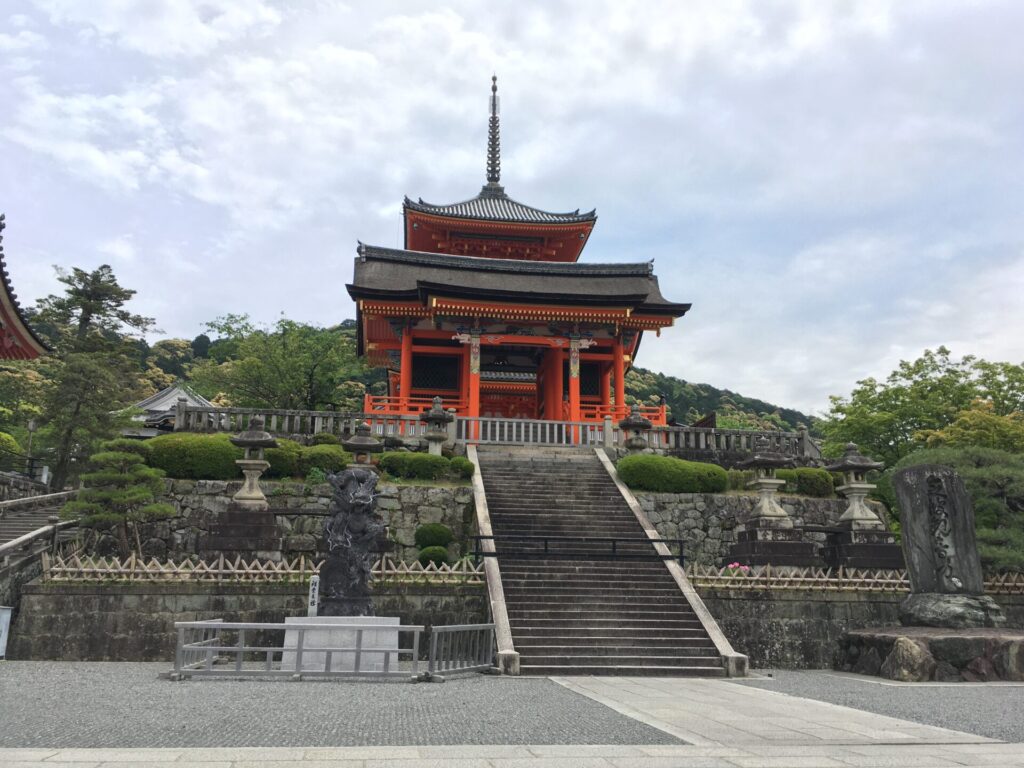
Depending on how you’ve followed the itinerary, your passion for deers, and whether you managed to see them in Miyajima, you might be interested in spending the morning in Nara and heading to Kyoto in the afternoon. If so, I recommend seeing Todaiji Temple (a Buddhist temple with a huge and beautiful Buddha statue), Isuien Garden (a Japanese landscape garden), and Nara Park (a park full of deers). It takes about 45 minutes by train from Osaka to Nara.
Kyoto is one of the most beautiful, famous, and important cities in Japan. It’s so important and beautiful that it was “spared” during World War II. The United States decided not to drop the atomic bomb on a city that holds so much cultural value. You could spend a week in the former Japanese capital and still not have time to visit all its temples.
This itinerary for the best of Japan in 2 weeks isn’t the typical itinerary you’d get from a travel agency. It includes essential cities like Osaka, Kyoto, and Tokyo, but also hidden gems that are unknown to the average Western tourist. I believe the cities I’ve included so far are part of the best of Japan in 2 weeks. They’re not typical tourist cities, but I’ve included them because I’ve visited them and I think they’re well worth it. Additionally, many travellers are interested in itineraries that go beyond the usual. This itinerary is flexible, so you can skip some of the previous cities and spend more time in Kyoto. Being a fairly large city with countless things to do and see, I recommend choosing some and visiting them by sector. That said, let’s move on to the 15 must-sees in Kyoto.
What to do and see in Kyoto in 2 days? 15 essentials of Kyoto
Centre:
- Imperial Palace: Kyoto Imperial Palace. It used to be used as a residence by the imperial family until 1868, when the emperor and the capital moved from Kyoto to Tokyo.
- Nishiki Market: Similar to Osaka’s Kuromon Market, but here, in addition to delicious dishes, you can also find shops selling typical Japanese knives, renowned worldwide for their beauty and sharpness.
North:
- Ryoanji Temple: Buddhist Zen temple with the most famous rock garden in Japan.
- Kinkakuji Temple: beautiful golden temple.
- Ninnaji Temple: temple listed as a UNESCO World Heritage Site.
South:
- Fushimi Inari Shrine: typical Japanese postcard. Shinto temple with thousand of orange toriis.
- Tofukuji Temple: one of the main temples of Zen Buddhism in Kyoto. If you are lucky enough to visit it during autumn, you can enjoy incredible red and orange forests thanks to the Japanese maple trees (momiji).
- Toji Temple: temple with the tallest pagoda (Asian-style tower) in Japan.
East:
- Ginkakuji Temple: Silver Temple. The younger brother of Kinkakuji. It’s worth strolling along the Philosopher’s Path on the way to the temple.
- Nanzenji Temple: one of the most important temples of Zen Buddhism in Japan. You should try to visit the Sanmon Gate, the Hatto (Dhamma Hall) and the temples Nanzenin, Konchi and Tenjuan.
- Kiyomizudera Temple: one of my favourite temples in Japan. Its name means “Temple of Pure Water”. This already gives you an idea of the type of temple to expect. The dragon statue at the entrance of the temple is impressive.
- Higashiyama: typical Japanese postcard. One of the best-preserved historical districts in the city.
West:
- Arashiyama: beautiful district that includes the Togetsukyo Bridge and another typical Japanese postcard: the bamboo forest. Ideal for enjoying tranquility while walking along the river.
- Tenryuji Temple: located in the Arashiyama district, it is another of the great Zen Buddhist temples in Japan.
- Katsura Imperial Villa: imperial villa with a beautiful Japanese landscape garden.
Days 12, 13 and 14: Tokyo
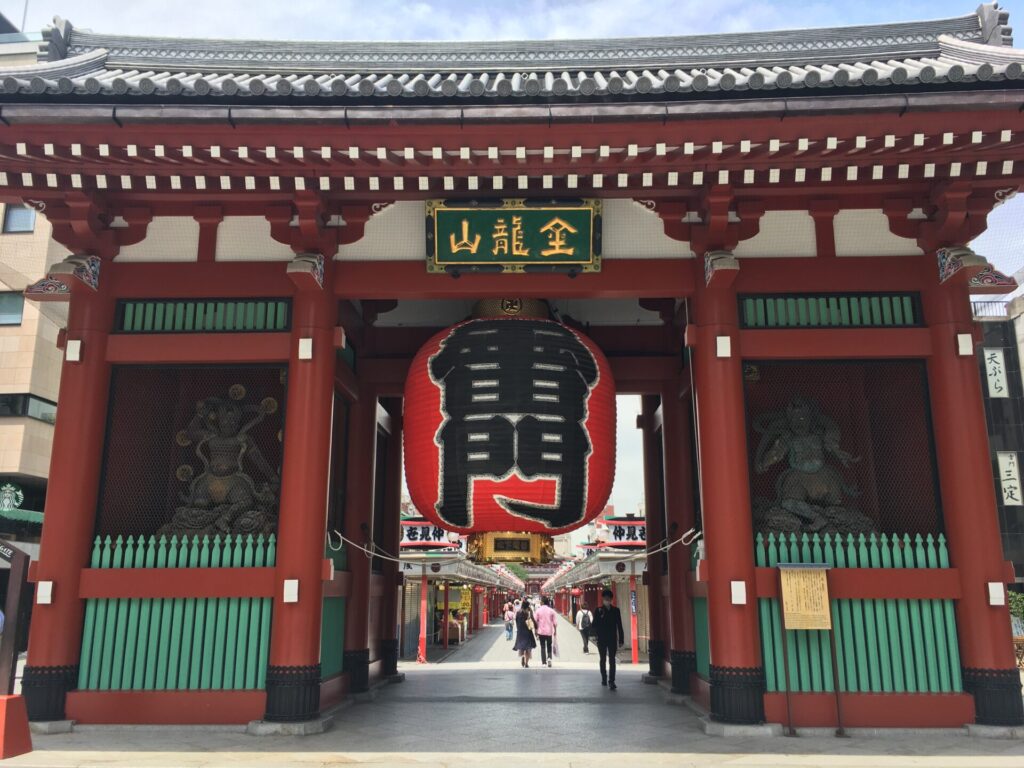
And we reach the end of the journey. The final stop, one of the largest and most impressive cities in the world: Tokyo. Just like I mentioned about Kyoto, in Tokyo, you could spend weeks and still not see everything there is to see. I was lucky enough to spend 6 months living there and still didn’t see it all 🙂 It’s an incredible city where the old and the new blend together to leave those fortunate enough to visit it in awe. I recommend that you do as you did with Kyoto, decide on the places you want to visit, and organize yourself by sectors. If you don’t do it that way, you risk spending a large part of your time commuting from one place to another. The 15 must-see attractions in Tokyo are organized by districts to make it easier for you to visit this mega city.
What to do and see in Tokyo in 3 days? 15 essentials of Tokyo
Centre:
- Akihabara: another popular district of Japan. The older sibling of Den-Den Town, the most otaku and famous neighbourhood in all of Japan. Anime shops, manga stores, and cosplay outlets abound. Maid cafes and game centers are also plentiful.
- Imperial Palace: the residence of the imperial family. It’s worth strolling leisurely through this vast complex and enjoying the East Gardens of the Imperial Palace.
North:
- Ueno Park: probably my favourite park in Japan. Temples, a huge pond, hundreds of cherry trees, statues, and even the Tokyo National Museum.
- Ameyoko: A bustling street packed with restaurants, izakayas, and bars. Located next to Ueno, it’s ideal for grabbing a drink and enjoying the lively atmosphere.
- Sensoji Temple: my favourite temple in Japan. It’s truly a marvel. The temple is located in the Asakusa district, one of the most beautiful neighborhoods in Tokyo where you can see buildings and streets from ancient times. The entrance gate to the temple, Kaminarimon, is another iconic symbol of Japan.
- Sumida River: it’s a quite long river, but it’s worth strolling along its banks at least from Azuma Bridge to Komagata Bridge. A unique and highly recommended experience is taking one of the boats that take you from Sumida to Odaiba (an artificial island created in Tokyo). This boat ride allows you to enjoy the city from the water. On the way to Odaiba, you can see the impressive Rainbow Bridge. You can get more information about the boats by clicking here.
- Tokyo Sky Tree: the tallest tower (not building) in the world at 643 meters. The entrance fee is a bit expensive, but it’s definitely worth it. The views of one giant (Tokyo) from the top of another giant (Sky Tree) are breathtaking. On a clear day, you can even see Mount Fuji! I recommend, as always, going during sunset to enjoy the city before and after the sun sets.
South:
- Odaiba: futuristic architecture on an artificial island. I recommend arriving at this area of Tokyo by boat from the Sumida River, in the Asakusa area. The island features shopping malls, a Statue of Liberty, another one of Gundam, views of the Rainbow Bridge, and the Fuji TV building, among others.
- Rainbow Bridge: if you’ve taken a boat to reach Odaiba or if you’re in the area of the Statue of Liberty, you can enjoy the views of this impressive bridge. However, what many people don’t know is that the bridge, besides by car or monorail, can also be crossed on foot from Odaiba. The sunset from here with views of the bay and Tokyo is one of the best you can see.
- TeamLab Borderless: the most spectacular museum I’ve seen in my life. Artificial intelligence, lights, moving figures throughout the museum, and much more.
West:
- Shibuya: I think this neighborhood in Tokyo needs no introduction. The busiest pedestrian crossing in the world, shops, restaurants, parks (I highly recommend visiting Miyashita Park to enjoy Shibuya from above), and the Hachiko Statue.
- Shinjuku: if I tell you that its train station is the busiest in the world, I think you can already imagine what type of area you’re going to visit. You can find everything you’re looking for: shopping centers, restaurants, bars, and entertainment areas.
- Meiji Shrine: temple dedicated to Emperor Meiji. It has a huge torii gate, several temples, and it is surrounded by nature.
- Yoyogi Park: one of the largest parks in Tokyo. Ponds, flowers, and forests. Ideal for a picnic or to rest and relax.
- Harajuku: another one of Tokyo’s most famous neighborhoods. It’s frequented by teenagers and adults alike. If you’re looking for fashion, clothing stores, restaurants, and cafes all in one area, this is the place for you.
And that’s the best of Japan in 2 weeks. As I mentioned earlier, I’ve created this itinerary based on my experience of living and traveling in Japan. You can’t go to Japan and not see Osaka, Kyoto, and Tokyo. But, if you have at least 2 weeks, it’s worth venturing off the typical tourist route and visiting other hidden gems that the Land of the Rising Sun has to offer. In case you have more than two weeks, I’ve also created an itinerary for the best of Japan in 3 weeks. I hope either of these proves useful and helps you enjoy a country as special as Japan. またね!😁🤞



